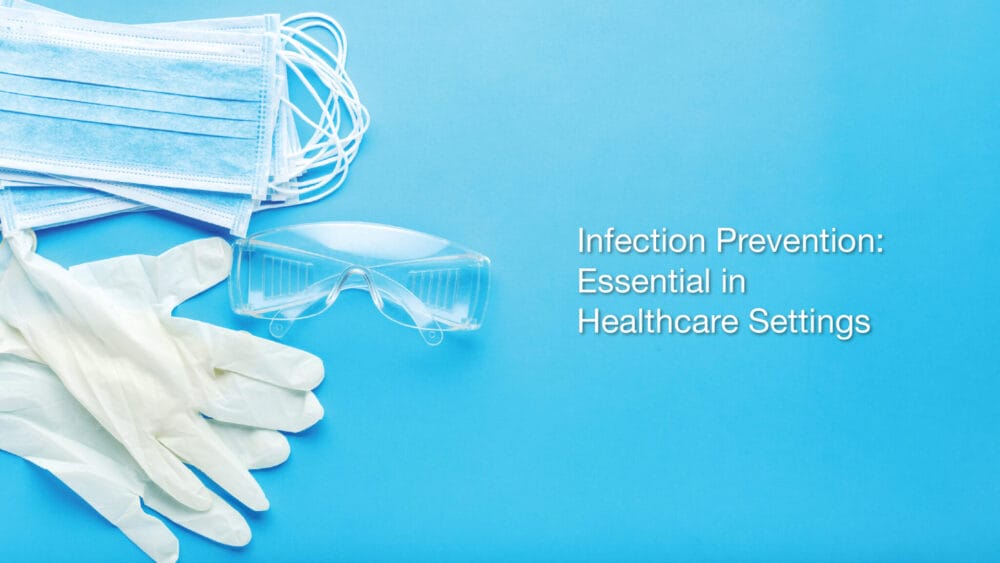
Providing quality patient care hinges on effective infection prevention and control (IPC) efforts, according to the World Health Organization. The healthcare environment, including supply storage areas, plays a critical role in reducing infection risks. The American Journal of Infection Control notes that contamination of these areas contributes to healthcare-associated infections (HAIs) — infections patients acquire during or shortly after receiving medical treatment.
When designing storage spaces, the layout, organization, and integration of technology can significantly enhance infection control outcomes.
Read on for key strategies to optimize healthcare supply storage and bolster your IPC efforts.
Best Practices for Storing Healthcare Supplies
Healthcare supplies account for more than 10% of a hospital’s annual budget, yet poor storage leads to waste — adding to the 40+ pounds of discarded medical materials per bed daily. Proper storage ensures supplies remain clean, undamaged, and organized.
Here are three essential tips:
Organization
Use modular carts and cabinets to organize supplies based on staff workflows, reducing unnecessary handling and preventing the spread of bacteria. Flexible storage with customizable components adapts to changing needs, offering an economical solution. Carts and cabinets can be repurposed instead of headed for the waste dump.
Accessibility
Store frequently used items between knee and chest level to minimize injury risks, as recommended by the Occupational Safety and Health Administration (OSHA). Pull-out hangers, baskets, and clear labels enhance access.
Cleaning Protocols
Opt for cabinets and carts with seamless, disinfectant-resistant surfaces. Schedule daily cleanings with approved disinfectants to prevent the spread of pathogens. Use easy-to-clean stainless steel in the OR, which holds up over time and withstands high sterilization temperatures. Ensure your scrub sink environment prioritizes functionality for staff, proper hygiene, and sustained infection control.
Design Storage Areas to Minimize Contamination
Storage area design directly impacts contamination risks, especially for critical patient care supplies that could transmit pathogens.
Consider these strategies:
Separation
Maintain distinct zones for sterile vs. non-sterile supplies and for clean vs. dirty supplies. Clean and dirty items should move along separate hallways. Mobile carts that tuck into corners keep high-traffic areas clear. Choose cabinets that offer a variety of sizes and customizable interiors, optimizing storage space so staff have more room to perform patient care.
Ventilation
Install appropriate ventilation in supply storage areas and prevent airflow from units with known infectious disease activity towards high risk areas, such as intensive care units. Well-ventilated cabinets further reduce contamination risks. Follow state, local, and regulatory agency guidelines on temperature and humidity levels.
Reduce Dust Buildup
Dust in healthcare settings harbors bacteria that threaten immunocompromised patients. Sloped tops on cabinets and carts prevent dust accumulation on high surfaces, simplifying cleaning and minimizing airborne contamination.
The Role of Technology in Infection Control
Technology enhances traditional infection prevention methods, improving cleanliness and safety in storage systems.
Antimicrobial materials
Coatings or infused surfaces on carts and cabinets inhibit bacterial growth, reducing pathogen adhesion.
Researchers continue to work to develop novel antimicrobial coatings in the war against multidrug-resistant bacteria. One such novel coating is applied by an electrostatic sprayer and shows antimicrobial effects for up to 15 weeks, according to the journal Clinical Infectious Diseases.
Smart Tracking
Digital keypad locks protect supplies from excess handling and resist damage from frequent cleaning. When connected to a WiFi-based system, a digital locking system provides real-time notifications of carts needing restocking or cleaning, preventing delays.
Endoscope cabinets with digital tracking capabilities monitor hang times, ensuring compliance. Connect scope cabinets to a cloud-based monitoring system and receive notifications when scopes expire, ensuring that expired scopes are not inadvertently used on a patient.
Key Takeaways:
Infection control requires vigilance and adaptable storage solutions. Organized, accessible, and clean storage — supported by thoughtful design and technology — reduces contamination risks and protects patients. Regularly evaluate your storage protocols and invest in flexible, innovative solutions to meet evolving healthcare demands. In a field where infection prevention is non-negotiable, the right storage systems are vital to patient safety.
Additional Article References:
- https://www.who.int/health-topics/infection-prevention-and-control#tab=tab_1
- https://www.sciencedirect.com/science/article/pii/S019665532300456X#:~:text=Conclusions,improve%20compliance%20among%20health%20care%20professionals.
- https://www.osha.gov/ergonomics
- https://pmc.ncbi.nlm.nih.gov/articles/PMC4923482/#:~:text=The%20design%20should%20support%20concept,standards%20in%20acute%20care%20areas.&text=The%20clean%20corridor%20and%20dirty,clean%20and%20dirty%20items%20separately.&text=Isolation%20wards%20for%20infectious%20cases%20to%20be%20kept%20out%20of%20routine%20circulation.
- https://academic.oup.com/cid/article/71/8/1807/5610270#google_vignette

Cindy Blye
Content WriterCindy Blye, BSN, RN, CCM is a Registered Nurse and Certified Case Manager. She is an Alumni of West Virginia University School of Nursing (BSN), and a member of the Association of Health Care Journalists and The Authors Guild.
